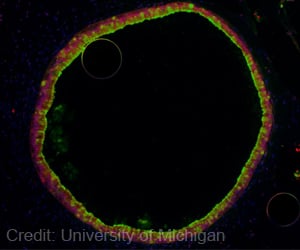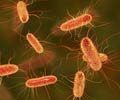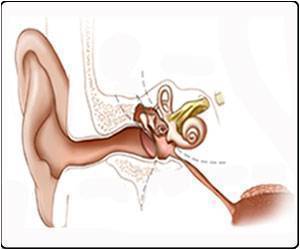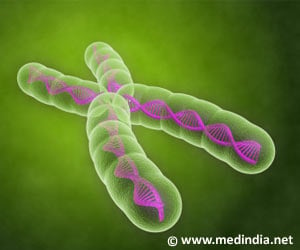E. coli has many beneficial functions, such as the production of vitamin K and B vitamins and prevent harmful bacteria from establishing in the intestine.
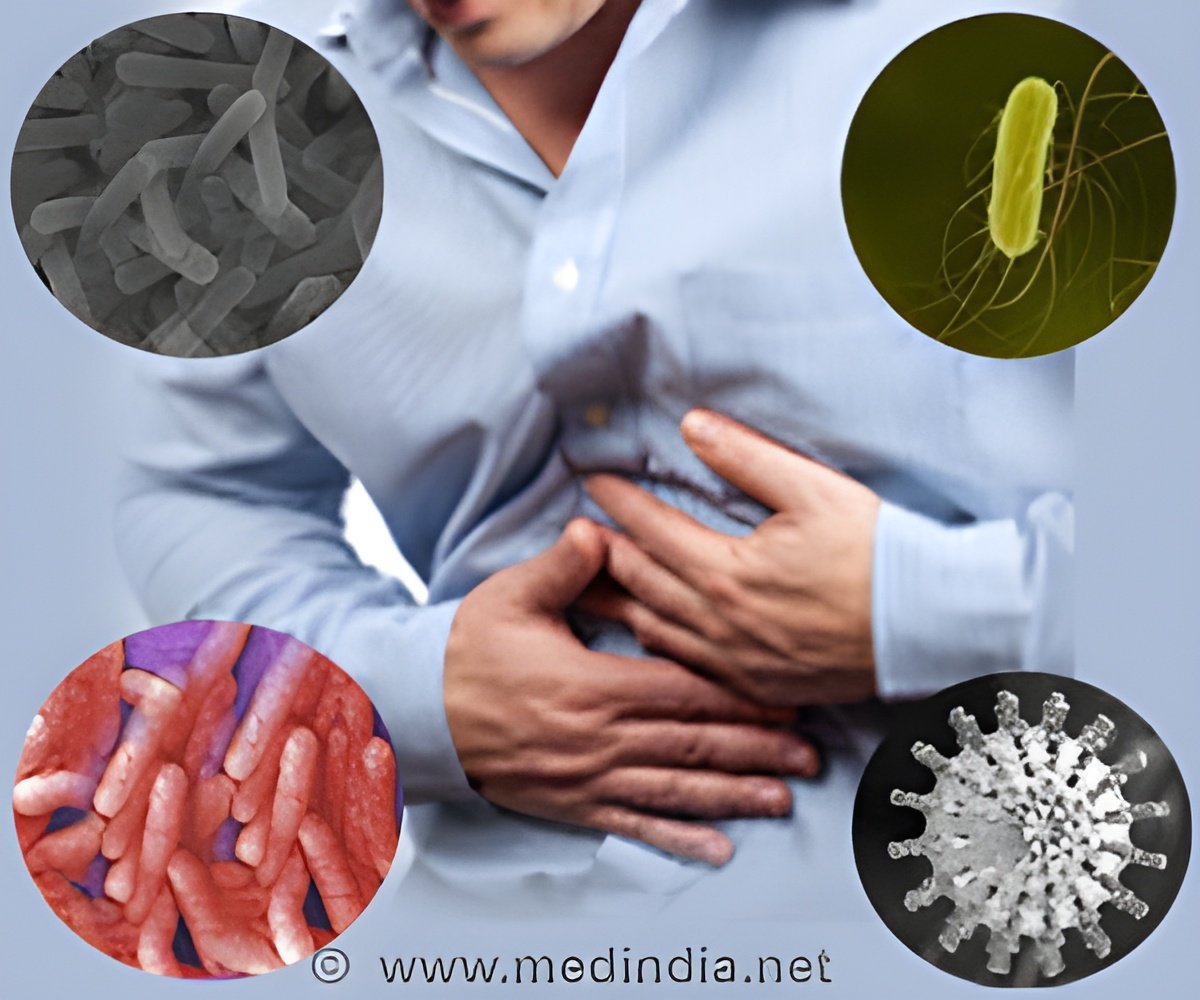
‘Escherichia coli (abbreviated as E. coli) are bacteria found in the environment, foods, and intestines of people and animals. E. coli are a large and diverse group of bacteria. Although most strains of E. coli are harmless, others can make you sick.’





"Dynamic assembly of these tunnels has long been hypothesized," said Peng Chen, professor of chemistry and chemical biology. "Now we see them." The findings could lead to ways to combat antibiotic-resistant bacteria with a "cocktail" of drugs, he suggests: "One is to inhibit the assembly of the tunnel, the next is to kill the bacteria."
To study bacteria's defensive process, Chen and colleagues at Cornell selected a strain of E. coli known to pump out copper atoms that would otherwise poison the bacteria. The researchers genetically engineered it, adding to the DNA that codes for a defensive protein an additional DNA sequence that codes for a fluorescent molecule.
Under a powerful microscope, they exposed a bacterial cell to an environment containing copper atoms and periodically zapped the cell with an infrared laser to induce fluorescence. Following the blinking lights, they had a "movie" showing where the tagged protein traveled in the cell. They further genetically engineered the various proteins to turn their metal-binding capability on and off, and observed the effects.
Their research was reported in the Early Online edition of the Proceedings of the National Academy of Sciences the week of June 12. The Cornell researchers also collaborated with scientists at the University of Houston, the University of Arizona and the University of California, Los Angeles.
Advertisement
The tunnel locks the inner and outer membranes together, making the periplasm less flexible and interfering with its normal functions. The ability to assemble the tunnel only when needed, rather than having it permanently in place, gives the cell an advantage, the researchers point out.
Advertisement
Source-Eurekalert

